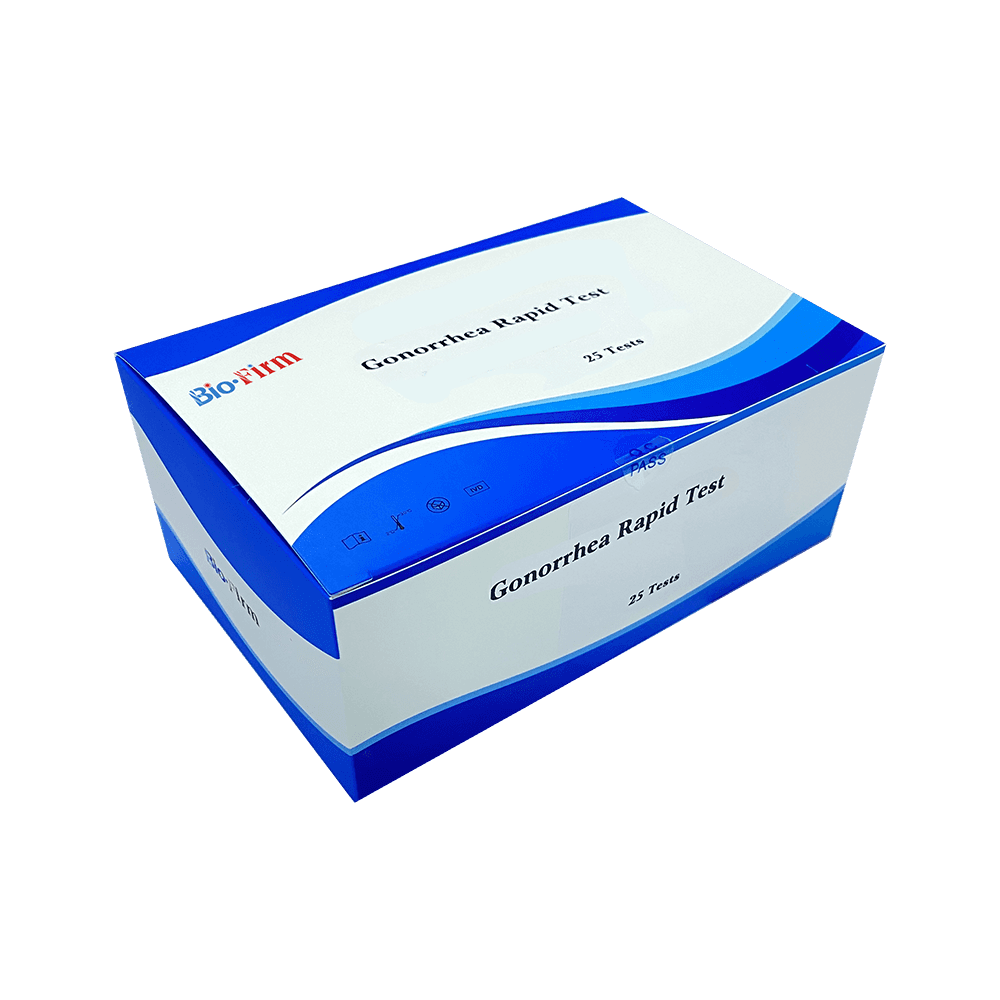Jul 01,2022
Gonorrhea is one of the most commonly reported bacterial STIs worldwide. According to the World Health Organization (WHO), there are approximately 82 million new cases annually , with significant morbidity associated with untreated infections—including pelvic inflammatory disease (PID), infertility, ectopic pregnancy, and increased susceptibility to HIV transmission.
The rise of antimicrobial-resistant strains of N. gonorrhoeae has further complicated treatment protocols, necessitating early detection and targeted therapy based on reliable diagnostics. However, many infected individuals remain asymptomatic, contributing to silent transmission and making widespread screening essential.
How Accurate Are Gonorrhea Rapid Tests?
While speed and convenience are clear advantages, the diagnostic accuracy of rapid tests remains a critical area of scrutiny. Key performance metrics include:
Sensitivity : The ability of the test to correctly identify those with the disease.
Specificity : The ability to correctly identify those without the disease.
Positive and Negative Predictive Values (PPV/NPV) : Depend on disease prevalence in the tested population.
Studies have shown that rapid tests generally exhibit lower sensitivity compared to NAATs , particularly when used with non-genital specimens like throat or rectal swabs. Sensitivity can range from 70% to over 90% , depending on the test brand, sample type, and disease prevalence.
However, in high-risk populations with elevated pretest probability, even moderately sensitive tests can offer clinically useful information. Moreover, recent improvements in antibody specificity and signal amplification have led to enhanced performance across various anatomical sites.
Advantages of Rapid Testing in STI Management
Despite limitations, gonorrhea rapid tests bring several compelling benefits to the table:
1. Immediate Results and Expedited Treatment
Unlike lab-based tests that may take days for results, rapid tests allow for same-day diagnosis and treatment initiation—reducing loss to follow-up and interrupting transmission cycles.
2. Accessibility in Resource-Limited Settings
Rapid tests require minimal equipment and training, making them ideal for use in rural clinics, mobile health units, and developing countries where access to centralized labs is limited.
3. Support for Syndromic Management
In areas where multiple STIs coexist, rapid tests can be integrated into syndromic management algorithms, enabling healthcare providers to treat common conditions simultaneously.
4. Privacy and Patient Empowerment
Self-testing and self-sampling options are increasingly being explored, offering discreet alternatives for individuals who may avoid clinical settings due to stigma or logistical barriers.
Limitations and Challenges
Despite their promise, several challenges must be addressed before rapid tests can become mainstream tools in gonorrhea control:
Lower Sensitivity Compared to NAATs : This can lead to false-negative results, especially in asymptomatic individuals or extra-genital infections.
No Antibiotic Susceptibility Data : Unlike culture methods, rapid tests cannot determine whether the strain is resistant to antibiotics, limiting guidance for targeted therapy.
Need for Confirmatory Testing : Positive results often require confirmation via NAAT or culture, adding complexity and cost in some settings.
Variability in Performance Across Brands : Not all commercially available rapid tests meet the same standards, highlighting the need for regulatory oversight and independent validation.
Integration into Public Health Strategies
To maximize impact, gonorrhea rapid tests should not be viewed in isolation but rather as part of a broader integrated STI response strategy . Key integration points include:

Use in High-Risk Populations : Such as men who have sex with men (MSM), sex workers, and adolescents—where frequent screening and immediate feedback are beneficial.
Combination with Multiplex Rapid Tests : Newer platforms allow simultaneous detection of multiple STIs (e.g., chlamydia, syphilis, trichomoniasis) from a single sample.
Linkage to Telemedicine and Digital Health Platforms : Enabling remote consultation, prescription delivery, and digital reporting—all critical in expanding access while maintaining quality care.
Public Awareness Campaigns : Promoting awareness and reducing stigma around STI testing to encourage uptake of rapid testing services.
Regulatory Landscape and Market Availability
Several rapid diagnostic kits for gonorrhea have received approval from regulatory bodies such as the U.S. Food and Drug Administration (FDA) , European CE marking , and the WHO Prequalification Program . Examples include:
SureScreen Gonorrhoea Rapid Test (UK)
Clearview® Complete Chlamydia & Gonorrhoea Test (Alere/Abbot)
OnSite Gonorrhea Rapid Test (CTK Biotech)
These tests vary in sample requirements, detection limits, and intended use environments. Ongoing research and development aim to improve accuracy, expand multiplex capabilities, and reduce costs.
The Road Ahead: Innovations and Opportunities
As the demand for rapid diagnostics grows, so too does the innovation pipeline. Emerging trends in gonorrhea POC testing include:
Molecular-Based Rapid Assays : Combining the speed of rapid testing with the sensitivity of molecular detection using isothermal amplification techniques like LAMP (Loop-Mediated Isothermal Amplification).
Smartphone-Integrated Diagnostics : Using phone cameras and apps for automated test interpretation, data logging, and telehealth connectivity.
Self-Testing Kits : Similar to at-home HIV and pregnancy tests, these could empower users to test in private, potentially increasing screening frequency.
AI-Powered Image Analysis : Enhancing accuracy and reducing user variability through machine learning models trained on thousands of test images.



 Español
Español
 Français
Français
 Deutsch
Deutsch
 عربى
عربى








